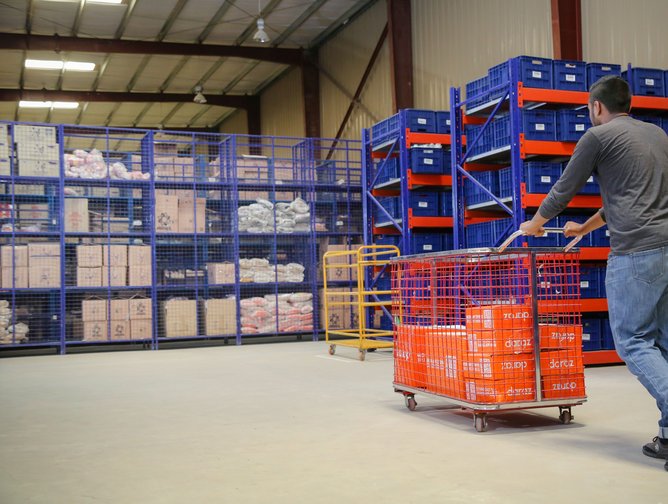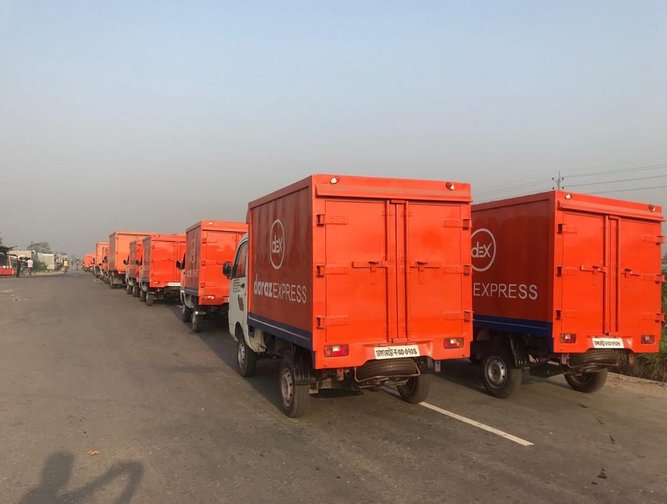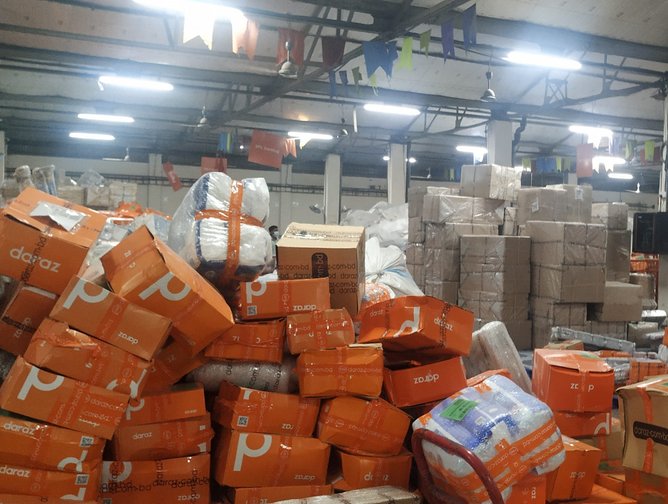How Daraz is building South Asia’s leading ecommerce platform
When it comes to opportunities in the ecommerce space, South Asia represents some of the world’s most fertile ground. With the barrier to entry for technology’s capabilities dropping lower all the time, emerging markets such as Pakistan, Bangladesh, Sri Lanka, Nepal and Myanmar - the territories where fast-growing retailer Daraz lays its cap - offer huge potential for enterprising tech leaders seeking to break new frontiers. Nevertheless, many are unaware of the untapped potential of the 500mn+ population in those markets and their desire to become part of a global economy through technology.
In 2015, Bjarke Mikkelsen, CEO at Daraz, made the bold leap from investment banking to the ecommerce space, targeting the as yet underserved South Asian region with great success. “I decided to do something different,” Mikkelsen explains. “I wanted to be in the right industry, at the right time, in the right markets for the first time, to take the advantage and do something cutting edge.” He is frequently asked how he managed to make a success of the shift between such different industries, but Mikkelsen asserts that the skills he has brought from his previous career have served him well in ecommerce. “It’s actually not that different because, in banking, my job was to make big things happen for people who were very ambitious and had the funds to follow through. In this case it’s more operational, but the principle is not that different.”
Having constructed a team with the market and sector knowledge to augment his acumen, the risk has certainly been rewarded. Considerable growth across its South Asian operations resulted in an acquisition from Asia’s pre-eminent ecommerce leader, Alibaba Group, in 2018, and the firm’s capabilities have since expanded exponentially. With the acquisition, Daraz has become an important piece of Alibaba’s global strategy to target 2bn consumers in its ecosystem by 2036..
During the transition of its IT systems from Portugal to Pakistan, Daraz re-platformed its systems to align with Alibaba’s global framework and resultantly unlocked reams of potential in the process. “It took about a year to finish, and it was not without pain or impacts to the business, but in the end the product we have today is ten times stronger and more advanced than anything we could have built ourselves in the next five years,” Mikkelsen enthuses. “It’s been a huge win for the business, in addition to the fact it’s part of Alibaba’s globalisation strategy. They have always taken us seriously, and we have always had the flexibility to customise how we deliver in our markets.”
Focusing on the wants and needs of market-specific customers has formed the backbone of Daraz’s operations and growth. The expectations of consumers in these emerging markets go deeper than simple functionality, Mikkelsen says, referring to the results of a recent study that Daraz conducted with market research leader Nielsen. “There were a couple of things that surprised me,” he says. “The most important thing from a user interface (UI) perspective is that it’s a fun experience.” The assumption that convenience is king is more applicable to more developed markets where entertainment is ubiquitous to the point of being all-consuming - in South Asia, those facilities for diversion are not so common.
Quality was also earmarked by the study as being of particular importance, especially in terms of offering comparison tools between non-branded products. Incorporating users into the process of differentiating products has also been a major element of the ecommerce platform’s development. “We apply a lot of focus to user-generated content, reviews and ratings, then using data and algorithms to ensure the sellers of good products get more exposure than sellers with lower quality offerings.” These factors have been embedded in the design of Daraz’s platform and accompanying mobile app, while the infrastructure surrounding its service continues to be developed in line with the third leading consumer expectation: rapid delivery.
Compared with the proximity of Mikkelsen’s native Denmark to its European neighbours, there is considerably more complexity and cost associated with international logistics in South Asia. “Because a large proportion of the population in our markets have a very low income, customers will not spend a lot of money on products in one go,” says Mikkelsen, noting that it therefore does not make sense to import low-cost items when the price of shipping will vastly outweigh the value of the product. As part of its Daraz University programme, which offers best practice advice and education for the platform’s sellers, the firm is looking to establish “hyper-localised ecosystems” through offering products to customers based not only on price and quality, but also on proximity.
This strategy is consolidated by Daraz’s hands-on approach to logistics, borne of the desire to expand its seller base as optimally as possible, regardless of the scope of individual merchants’ operations. Having established its own logistics company, Daraz Express (DEX), which, as a digitised and fully integrated firm, represents a first for the region, Daraz “wants hundreds of thousands of sellers on the platform; small and large distributors, individual retailers and manufacturers. Some of them have the capacity to operate their logistics independently, with their own ecommerce setup and their own people to prepare the packages along with shipping and delivery. Some of them don’t have that capacity and would rather that Daraz manage the logistical processes. That’s something we have spent a lot of time building in terms of the system and process parts, along with the value proposition to sellers,” he says.
If an order is made for a product that isn’t distributed by Daraz’s own fulfilment centres, the merchant receives a sale notification via the seller app. From there, they can prepare the package, print an airway bill, and send the package via one of two options. In some areas, Daraz provides a local pickup service while, failing that, the seller can alternatively drop the package at one of the firm’s distribution hubs to be fulfilled by Daraz’s logistics network. “As long as we control the package on our systems, it’s not a problem. The challenge is that, once we hand over the package to a third party, such as a delivery partner, what happens? Is that third party integrated with our systems? What is their service level? Are they living up to our standards of good customer service? That’s the main challenge.”
Daraz is demonstrably unafraid to take responsibility for the quality of the service its customers receive, with Mikkelsen pledging that, should any complications arise, the firm will do its utmost to take care of the customer. This, however, is not the only manner in which Daraz is working to develop its brand as a trustworthy platform for consumers who are cautious of technology and the intentions of companies that provide it. “Trust is a gigantic challenge,” acknowledges Mikkelsen, noting that partnering with trusted brands has been a major factor in its strategy. “We did an integration with a Friday night game show in Pakistan which can attract around 10mn live viewers. That’s almost twice the population of Denmark. Paid partnerships like these, as opposed to online marketing, are one of the ways to build trust in our brand.” The gravitas that comes through such partnerships clarifies that the company “is not just kids in a garage posting online adverts and sending out products”, he says.
“If you have a good, loyal customer base, then you have a strong foundation to grow from. If we cannot retain the customers we acquired, it doesn’t matter if we have 200mn potential customers in Pakistan or 160mn in Bangladesh because we can’t just acquire customers without retaining them. In the end, we have to deliver a certain level that makes sure we have happy customers. We want to capture as big a market as possible, but we want to make sure that we scale in a healthy way where we primarily focus on growing the organic order base and making sure that the customers that come on the platform stay on the platform, and are comfortable with returning to it for more purchases.”
Considering Daraz’s considerable growth and continuingly ascendant market penetration across South Asia, the strategy is certainly yielding success. Looking forward, Mikkelsen is enthusiastic about the potential for yet further expansions of Daraz’s capabilities and offering. “In the past, we’ve focused on building the categories we offer and developing a good standard of service across our operations, and that’s taken a lot of time and effort,” he says. “Now that we have a very strong base, we want to make sure that there’s something for everyone on Daraz.”
This expansion includes, but will not be limited to, a fashion channel, dubbed D-Fashion, with tailorable experiences for individual customers, along with D-Mart, a dedicated grocery function. “D-Mart will offer different, unique value propositions, such as overnight deliveries of fresh products sourced directly from farmers. For people who want fresh groceries with guaranteed high quality, we can do that. If you want a monthly subscription service for your groceries, we can do that too,” says Mikkelsen. D-Motor, another addition on the horizon, will cater to motorists and enthusiasts in a manner akin to D-Fashion.
For those of us in more developed parts of the world, ecommerce and its ever-increasing convenience has become commonplace, even unremarkable. It is therefore important to remember the gravity of what Daraz is developing in South Asia, and what a marked paradigm shift it is offering consumers in the midst of maturing economies. With the scope and depth of Daraz’s operations only set to grow, it’s certainly an exciting time both for the firm and for the hard-won customers it holds dear.








